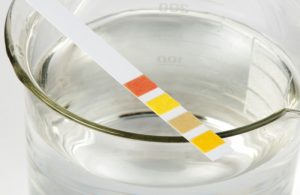Different water words – what exactly do they mean?
Confused about the myriad of water words that are floating around?
We feel you.
From distilled water to alkaline water, it can get a little overwhelming… to say the least!
Not all waters are created equally, so we want to go through each and every word so you know exactly what is what.
Let’s begin.

Purified water
Purified water is ‘purer’ than all the alternatives. That includes tap, spring or filtered water.
This is because it’s not only filtered, but also goes through additional processes such as distillation, reverse osmosis, deionisation or carbon filtration to remove pathogens, chemicals, contaminants, nutrients and minerals. As a result, it’s sometimes also called ‘demineralised water’.
While it may sound perfect, making the water more ‘pure’ doesn’t necessarily make it the best. Since purified water goes through a stack of processes, it’s actually heavily treated to make it ‘pure’.
These treatments often take away the good stuff like magnesium and calcium and strips water of its natural healthy nutrients. In fact government organisations have published studies warning about the consumption of and cooking with reverse osmosis water finding it can have negative health effects.
Distilled water
 Distilled water is a form of purified water. It’s created by boiling the water to create steam and the resulting vapour is then condensed back to a liquid form.
Distilled water is a form of purified water. It’s created by boiling the water to create steam and the resulting vapour is then condensed back to a liquid form.
The boiling process frees the water of bacteria, but often leaves behind contaminants including metals that have a higher boiling point than water.
Like purified water, the distilling process also rids the water of essential nutrients and minerals.
While distilled water is good for applications in laboratories, industrial production and use domestic appliances like irons, it doesn’t necessarily mean it’s the best option for your health.
Alkaline water
Alkaline water has made a bit of a buzz in the world in wellness.
The term ‘alkaline’ refers to the pH level of the water. That’s the number that measures how acidic or alkaline a substance is.
So on a scale of 1-13, a pH of 1 is very acidic and a pH of 13 is very alkaline. Regular drinking water has a neutral pH of 7 while alkaline water has a higher pH, generally between 7 and 9.5.
Alkaline water is produced via a device called a water ioniser. Tap water is run through the water ioniser which then uses electrolysis to separate it into acidic and alkaline components.
Some expensive bottled water that is also classed as alkaline is often passed through rocks and soil to pick up various, alkaline-boosting minerals. That means it can also pick up some other not-so-great bits along the way…
Spring water
 Spring water is generally regarded as water that comes from an underground aquifer and flows naturally to the surface.
Spring water is generally regarded as water that comes from an underground aquifer and flows naturally to the surface.
As the water moves through underground rocks, minerals such as calcium, magnesium, sodium and potassium are dissolved in the water, resulting in a supposed healthy result.
However, there’s no guarantee that the bottle of spring water on the shelf at your local supermarket is legit.
Various consumer investigations found that some of Australia’s most popular brands were very reluctant to give any details about where their products are sourced. And a few even lied.
We’re not naming names…
Tap water
This one is simple. Tap water comes straight from the tap. In Australia, it comes from a variety of sources, including dams, barrages, groundwater bores, rivers and desalination plants.
Despite occasional parasitic outbreaks of of things such as giardia and the chlorine treatments that can make it taste and smell iffy, Australia’s tap water is safe by world standards and regulated by the Australian Drinking Water Guidelines.
Filtered water
Filtered water is the result of water being passed through a water filtration system. In its simplest form it can be a water filter jug or a dedicated tap water filtration system or inline water filter system.
The filtration process extracts harmful particles and contaminants from the water such as lead, rust and cysts like giardia and cryptosporidium without losing all the beneficial salts and minerals that are good for your health.
The water filtration method is also sometimes referred to as the adsorption method. This is where a substance like carbon is used to make the contaminants in the water adhere to the pores within the carbon. Read more about how a water filter works.
So, next time you’re bombarded by all those confusing water words, remember there is only one that delivers the very best – filtered.

Classic Filter System
Traditional filter tap system with a dedicated filter tap above the bench and WFA Classic filter system discretely concealed under the bench.
Read More


